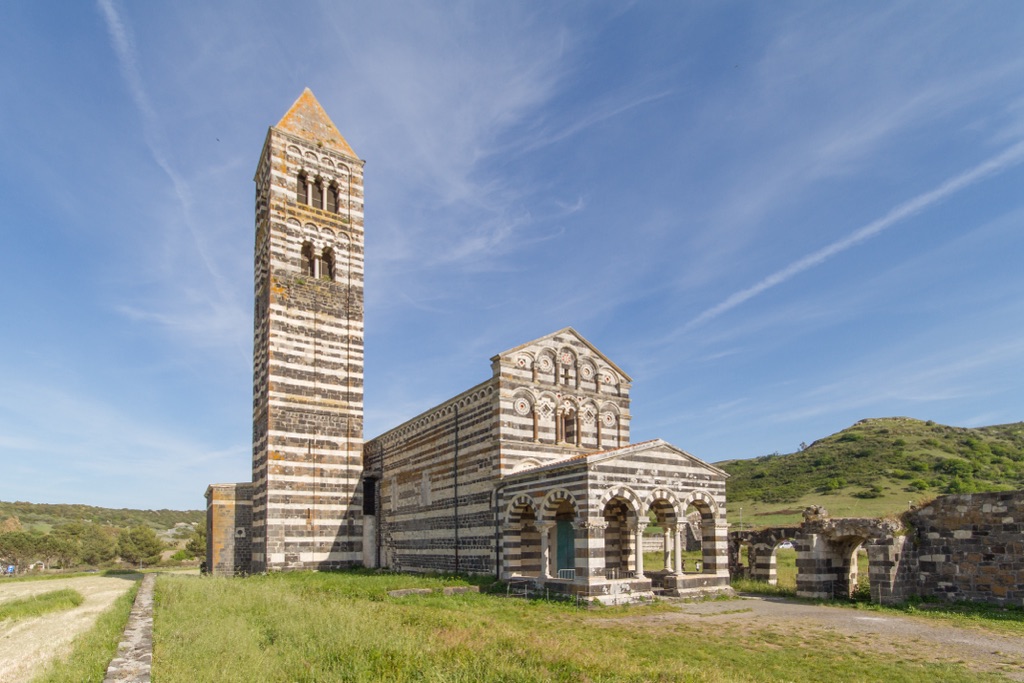The Basilica di Saccargia is a shining example of Pisan Romanesque architecture in Sardinia, Italy. Known for its distinctive black and white stone patterns, it stands as a testament to the island’s medieval history. The church, dedicated to the Holy Trinity, is adorned with frescoes that are among the most important Romanesque paintings in Sardinia. Its construction dates back to the 12th century, and it has since been a beacon of religious and cultural significance. The basilica’s pastoral surroundings contribute to its serene atmosphere, making it a cherished landmark.
Get your dose of History via Email
Historical Background of Basilica di Saccargia
The Basilica di Saccargia, nestled in the heart of Sardinia, was built in the 12th century. It was commissioned by the Judge of Torres, Constantine I, and his wife Marcusa. Legend has it that they vowed to build a church if they were blessed with a child. Their prayers were answered, and the basilica was constructed as a token of gratitude. The site was initially a monastery, run by Camaldolese monks from Tuscany. Over the centuries, it has seen various renovations, preserving its historical essence.
Its discovery in modern times has not been documented as a singular event. Rather, the basilica has been a continuous part of Sardinian heritage. The church was built by Pisan architects and craftsmen, who left a lasting influence on the island’s architecture. The basilica’s name, Saccargia, is believed to derive from the word ‘saccar’ which refers to the striped appearance of the local stone used in its construction.
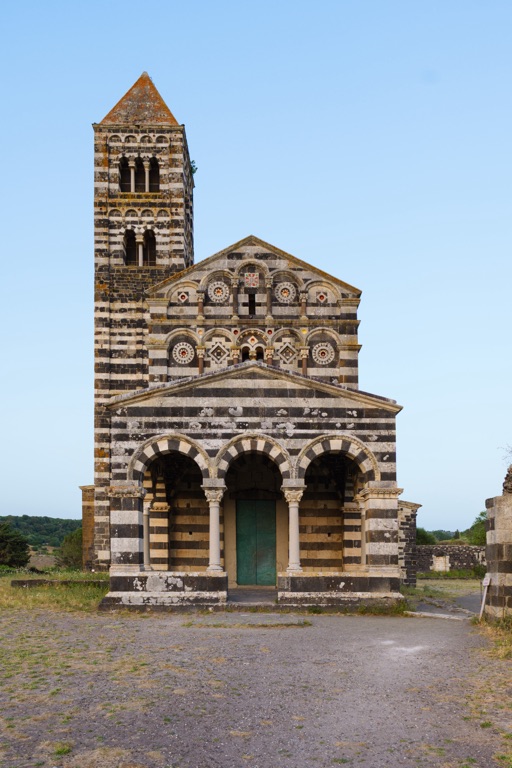
Throughout its history, the Basilica di Saccargia has been more than just a place of worship. It has been a cultural hub for the local community. Although it fell into disrepair, it was restored in the 20th century. The restoration brought back to life its stunning frescoes and architectural details. The basilica has not been the scene of any major historical events, but it remains an important symbol of Sardinian identity.
The church has been consecrated and reconsecrated over time, reflecting its enduring religious significance. It has also been a pilgrimage site, attracting visitors from across the region. The basilica’s architecture and art have been well-preserved, allowing it to serve as a window into the past for historians and tourists alike.
Today, the Basilica di Saccargia stands as a monument to the island’s medieval past. It continues to be a place of worship and a popular tourist destination. Its history is a tapestry of faith, art, and architecture that has withstood the test of time.
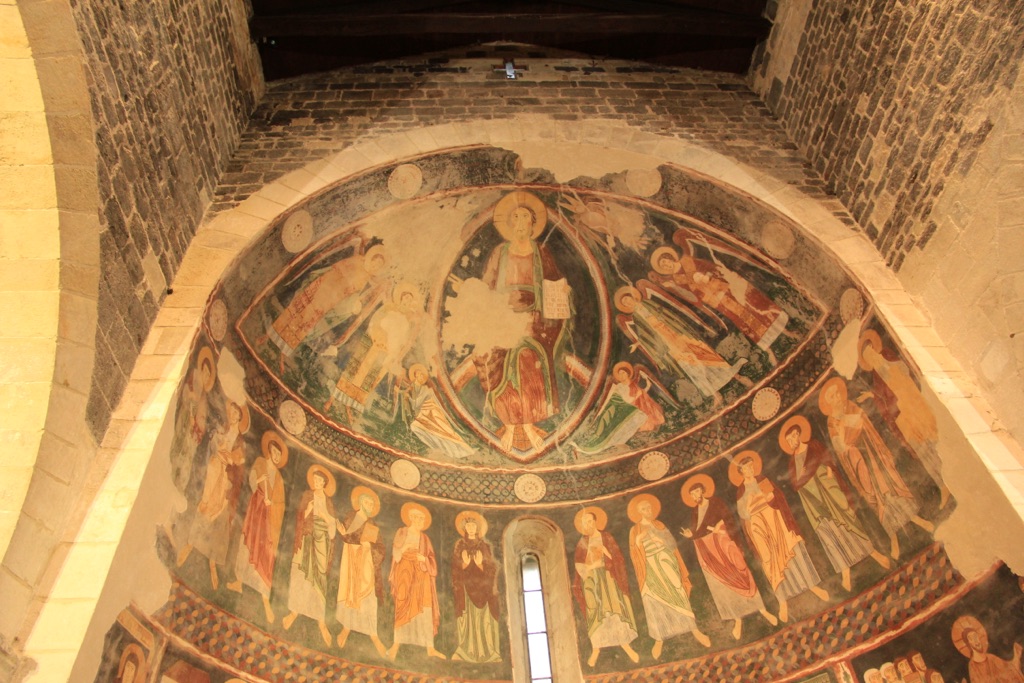
About Basilica di Saccargia
The Basilica di Saccargia is a masterpiece of Romanesque architecture. Its facade features alternating layers of local black basalt and white limestone, creating a striking visual effect. The church is cross-shaped, with a nave, two aisles, and a transept. The apse is semicircular, typical of Romanesque style, and it is adorned with blind arches and Lombard bands.
The interior of the basilica is equally impressive. It houses a wealth of frescoes, most notably the 13th-century painting cycle attributed to the Master of Castelsardo. These frescoes depict scenes from the Old and New Testaments, showcasing the artistic prowess of the time. The nave’s wooden ceiling, although restored, gives a sense of the original medieval structure.
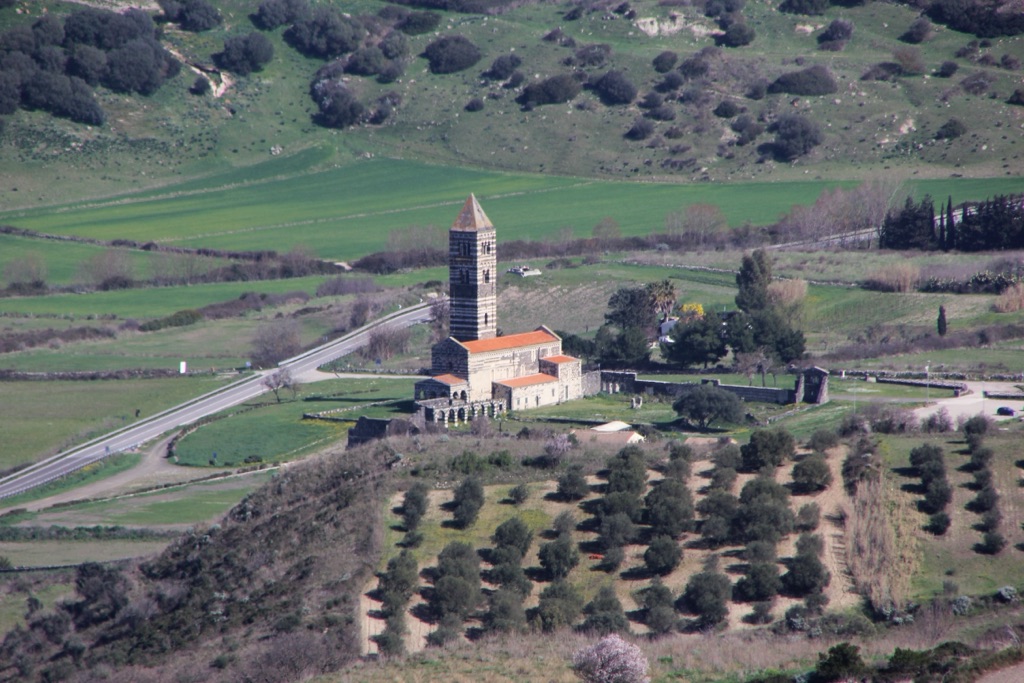
The construction methods of the basilica reflect the technical skills of the Pisan architects. They employed precise stone-cutting techniques to fit the black and white stones together seamlessly. The use of locally sourced materials not only provided durability but also contributed to the basilica’s aesthetic harmony with its surroundings.
Architectural highlights include the bell tower, which stands separate from the main body of the church. Its design is simple yet elegant, with small, rounded arch windows punctuating its height. The church’s facade is adorned with a rose window and a relief depicting the Virgin and Child, adding to its decorative richness.
Over the years, the basilica has undergone careful restoration to preserve its historical integrity. These efforts have ensured that the building materials and construction techniques remain true to the original design. The Basilica di Saccargia continues to be a testament to the ingenuity and artistry of its creators.
Theories and Interpretations
The Basilica di Saccargia has been the subject of various theories and interpretations. Its unique black and white pattern has led some to speculate about the symbolic meanings behind the color choice. Some suggest it may represent the Camaldolese monks’ habits or the duality of good and evil.
The purpose of the basilica has always been clear: it served as a religious sanctuary and a monastery. However, the significance of its frescoes has been widely debated. The scenes depicted raise questions about the influences and messages the artists intended to convey to the medieval worshippers.
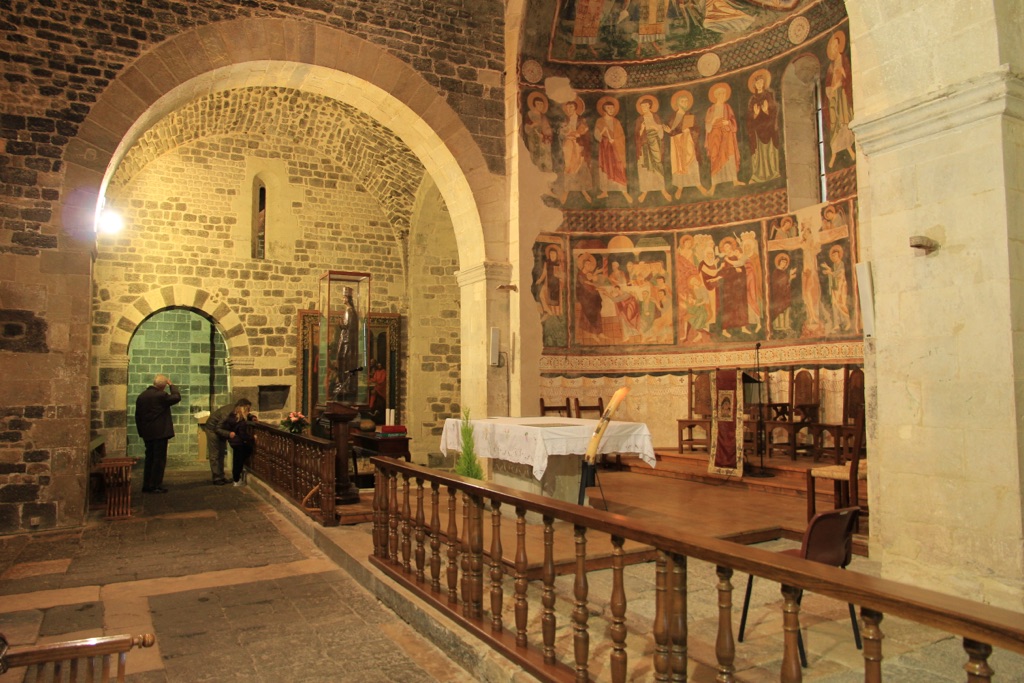
Mysteries surround the basilica, particularly regarding the origins of some architectural elements. For instance, the influence of Tuscan styles suggests a connection to mainland Italy, yet the exact nature of this relationship is not fully understood. The presence of certain motifs has led to theories about cultural exchanges during the Middle Ages.
Historical records provide some context for the basilica’s construction and use, but gaps remain. These have been filled by interpretations based on the architectural and artistic styles present. The dating of the frescoes and other artworks has been carried out using stylistic analysis, as precise records of their creation are lacking.
Despite these uncertainties, the Basilica di Saccargia continues to be a subject of fascination. Scholars and visitors alike are drawn to its history and beauty. Each theory and interpretation adds a layer of depth to our understanding of this remarkable site.
At a glance
- Country: Italy
- Civilization: Pisan Romanesque
- Age: 12th century AD

